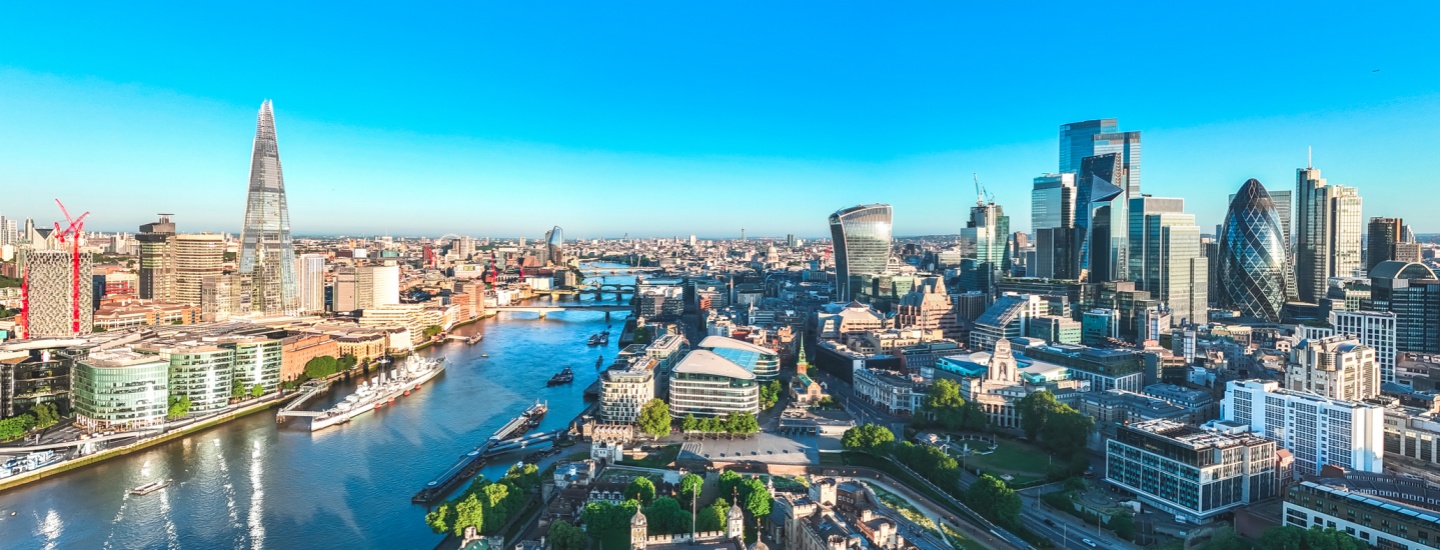The much-anticipated new London Plan consultation document 'Towards a new London Plan' was published on 9 May, with consultation running until 22 June.
The consultation document sets out the key new ideas the next London Plan may cover, set against the backdrop of objectives that include accelerating housing delivery, expanding access to affordable homes, improving transport infrastructure, and tackling homelessness. The document acknowledges the Government's ambitious target of delivering 88,000 new homes per year in London, amounting to 880,000 homes over the next decade. This is a significant uplift from the current housing target set out in the adopted Plan.
The consultation document highlights the need to continue to prioritise brownfield land but also references the need to take opportunities to streamline policies and remove development barriers. While protecting the green belt, the Mayor acknowledges that brownfield alone won't solve London's housing crisis and therefore, repurposing low-quality green belt and Metropolitan Open Land (MOL) will be required in order to meet housing needs.
Our key take-aways on the consultation document are as follows:
- Brownfield First - The current London Plan commitment to prioritising brownfield development is to be maintained, with several measures proposed to support this approach.
- Tall Buildings – London boroughs will be encouraged to identify locations for Tall Buildings, with the next London Plan potentially actively defining clusters and revising height standards. It may also set “in-principle” height limits across London and lower the threshold for applications requiring referral to the Mayor. Clearer guidance is to be provided to help authorities assess tall buildings outside designated clusters.
- London View Management Framework (LVMF) – the consultation outlines a proposed review of the London View Management Framework (LVMF) to achieve an optimal balance between preserving significant views and facilitating development.
- Denser London – The Mayor will seek to enhance the connection between transport accessibility and denser development, recognising PTAL's limitations. A key opportunity is stated to lie in optimising existing infrastructure, particularly by increasing National Rail service frequencies in suburban areas. We query who will fund these additional services.
- Opportunity Areas – There is the need to reassess Opportunity Areas (OAs), refining their designation as some have matured and no longer stand out from other London locations. Certain OAs may be reclassified in line with transport improvements or de-designated in areas where transport projects face uncertainty.
- Central Activities Zone (CAZ) – there is discussion on redefining the boundaries of the CAZ to exclude predominantly residential areas, allowing these locations to contribute more effectively to housing delivery. Additionally, underutilised office spaces within the CAZ could be repurposed for housing.
- Industrial Land – Industrial zones in the Grey Belt could be reassessed, prioritising areas unsuitable for housing. Heavier industrial, logistics, warehousing, and infrastructure uses to be promoted in clearly designated industrial zones.
- Grey Belt / MOL– The Mayor notes the potential in Grey Belt and Metropolitan Open Land (MOL) for housing and has commissioned a Green Belt Review to identify underperforming sites for release. The next London Plan could distinguish MOL from the Green Belt and protect it from reviews. However, some MOL sites, like golf courses, could be encouraged for housing.
- Threshold Approach – there is a commitment to review threshold requirements to make sure that they still provide the right incentives to support affordable housing, identifying whether some types of development are challenging to deliver.
- Town Centre / High Streets – The next London Plan should aim to increase flexibility in town centres and high streets, supporting a broader range of industries like light industrial, life sciences, laboratories, data centres, circular economy activities, and last-mile logistics.
- Design Related – Design related ideas have been suggested, including a recognition that applying strict dual-aspect requirements can limits housing and cycle parking standards are often costly and underutilised. The Mayor has committed to a review of both.
- Fire - The next London Plan seeks to remove overlap between planning policies and building regulations. It will clarify that planning officers should not assess fire safety. The Mayor recognises that fire safety policies are inconsistently applied, especially in minor developments. The Planning Officer's Society has been actively lobbying Central Government on this issue, and the removal of fire policies could be viewed as a positive step toward enabling planning officers to concentrate on core town planning matters.
The Mayor's consultation outlines a commitment to housing growth, with industry concerns such as cycle parking and dual-aspect requirements proposed for review. Key positives include the emphasis on brownfield land and the potential for densification through policies on tall buildings, as well as adjustments to the CAZ, OA's, threshold approach and LVMF to stimulate and encourage growth. However, proposals to enhance suburban densification via improved rail frequencies may be truly aspirational, lacking a clear foundation in realistic funding. In general implementation of these ideas may face challenges and will need bold decision-taking, particularly on sensitive issues like the green belt and MOL.
We fully support the ambition to accelerate housing delivery.
The consultation document can be found here: https://www.london.gov.uk/programmes-strategies/planning/london-plan/towards-new-london-plan-consultation. Consultation remains open until 22 June 2025. For more information on the emerging London Plan or if you wish to speak to us about preparing representations on your behalf, please contact Giuseppe Cifaldi on 07743 934 529 or giuseppe.cifaldi@carneysweeney.co.uk

